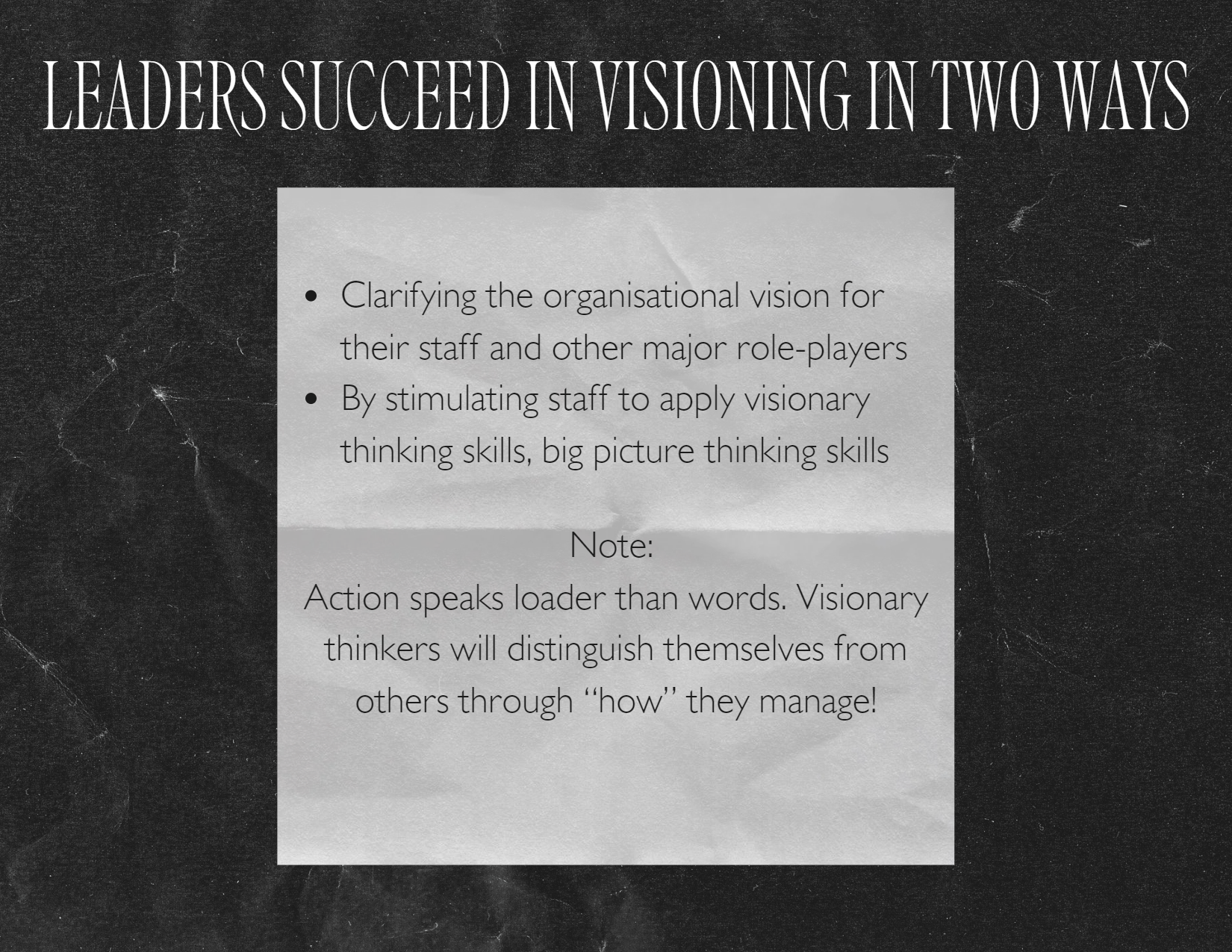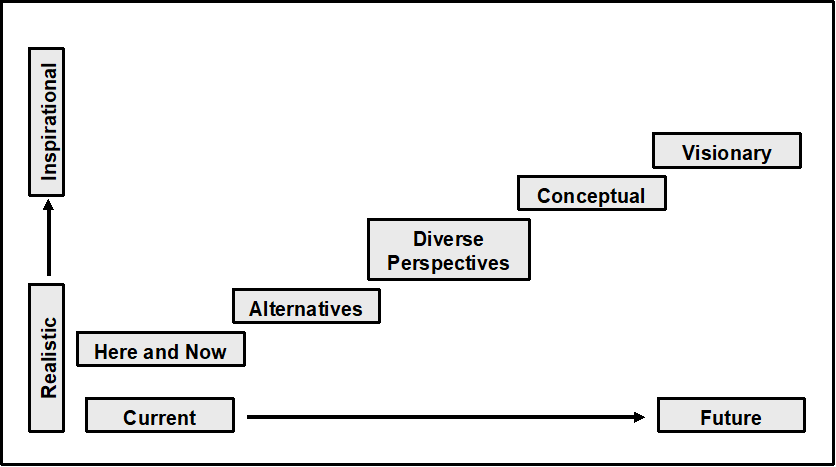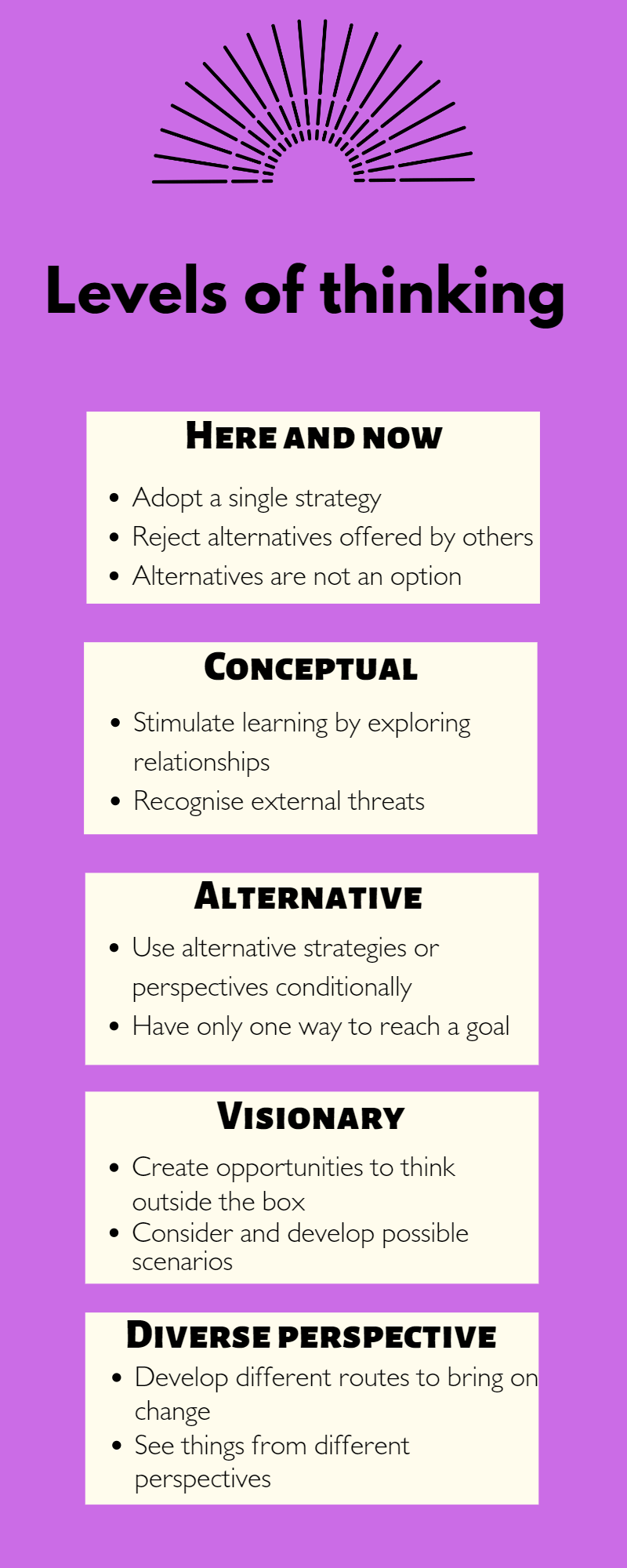With timeless wisdom, Solomon once observed: “Where there is no vision, the people perish.” Vision is nothing more than the capacity to look beyond the moment into the vast potential of tomorrow. To be an inspirational leader one must have a vision – an idea greater than the present. Without such vision, leadership is only perpetuation; action is predicated on the past, instead of the future. This is not to suggest that visionary leadership is disconnected from its historical roots, or that tradition is inherently negative. Rather, proper vision potentiates its past by allowing room for new thoughts and ideas, many of which may have yet to be conceived or discovered.
Lack of vision hinders leadership and handicaps the people. Vision comes from and speaks to the heart, not just the head. Vision is also a dream and is most effective when it belongs to a group rather than an individual. It is not about ambition or profit but something else – a new way of travelling or a new way of doing things. Desire to work for something meaningful is achieved when employees are put at the centre of the vision rather than being held down in the hierarchy or out on the periphery. When managers try to control vision it reduces its potential.
Trying to keep ‘on top of things’ is a way of control. Instead, people should be encouraged to bring their own ideas to the vision. People don’t need to be controlled to commit themselves wholeheartedly to a vision, but they do need to connect and they do this with their own ideas.
Visionaries who are successful at manifesting their visions base their leadership on an inspirational, positive picture of the future, as well as a clear sense of direction as to how to get there. Vision is a field that brings energy into form and effective leaders broadcast a coherent message by themselves embodying their vision and their values.

Consider the continuum of thinking below:


|
Levels of Thinking |
|
|
Table |
Behaviour Indicators |
|
Here and Now |
Adopt a single strategy to make changes. Reject alternatives offered by team members. Get bogged down on current issues and realities. Get people to implement a strategy without looking at alternatives. |
|
Alternative |
Use alternative strategies or perspectives conditionally, but not simultaneously. Have only one way to reach a good or set up a plan. |
|
Diverse Perspectives |
Stimulate learning by identifying alternative strategies to view situations. Develop more than one route to bring about changes or achieve future goals and objectives. See events from more than one perspective (state another way of seeing a situation or problem). |
|
Conceptual |
Stimulate learning by exploring the relationships between alternative strategies. Compare the pros and cons of alternative routes to gain a deeper understanding of the necessary steps. Recognise external threats and opportunities and take bold steps to deal with them. |
|
Visionary |
Build a culture in which decision-making through analysis of alternative plans is valued and actively encouraged. Create opportunities for people to think from different perspectives. Use the external and internal forces that impact the positioning of the organisation to gain a competitive advantage. Consider and develop possible scenarios. Expect people in the company to analyse their alternative plans continuously. |
Click here to view a video that explains why vision Is essential in leadership.